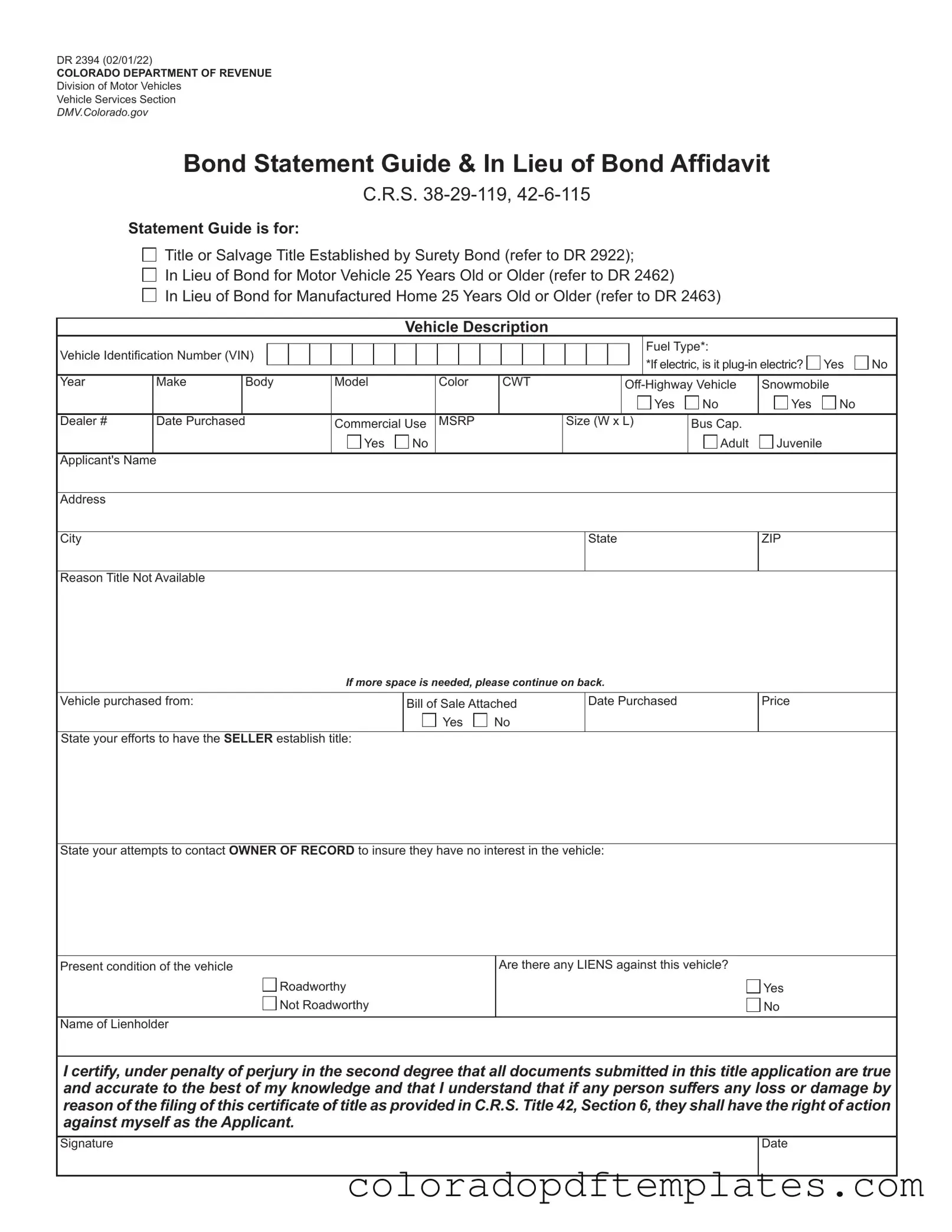The Colorado DR 2394 form is primarily used for establishing title or salvage title for a vehicle when a surety bond is involved. It can also be utilized in situations where a vehicle is 25 years old or older, allowing for a title to be issued in lieu of a bond. This form is essential for individuals who cannot obtain a traditional title for their vehicle.
Anyone who has purchased a vehicle but is unable to obtain the title from the seller may need to complete the DR 2394 form. This includes situations where the vehicle is older than 25 years or when a surety bond is required. It’s also relevant for those dealing with manufactured homes that meet the same age criteria.
The form requires various details, including:
-
Vehicle Identification Number (VIN)
-
Year, make, body model, and color of the vehicle
-
Fuel type and whether it is a plug-in electric vehicle
-
Purchase date and price
-
Seller's information and efforts made to contact them
-
Current condition of the vehicle
-
Any existing liens against the vehicle
Make sure to provide accurate and complete information to avoid delays.
What if I can't get the title from the seller?
If you are unable to obtain the title from the seller, you must document your attempts to contact them. The DR 2394 form includes sections for you to explain your efforts. This information is crucial for the Department of Revenue to understand your situation.
Yes, there may be fees associated with processing your title application. These fees can vary based on the type of vehicle and the specific circumstances surrounding your application. It’s advisable to check with the Colorado Department of Revenue for the most current fee schedule.
Do I need a notarized bill of sale?
A notarized bill of sale is often required when submitting the DR 2394 form. This document serves as proof of your purchase and helps validate your claim for title. Ensure that you attach this document when you submit your application.
What if there are liens against the vehicle?
If there are liens against the vehicle, you must disclose this information on the form. The name of the lienholder should be provided. It’s important to address any outstanding liens before proceeding with the title application, as they can affect your ability to obtain a clear title.
At the end of the DR 2394 form, you will need to sign a certification statement. By signing, you affirm that all the information provided is true and accurate to the best of your knowledge. Be aware that providing false information can lead to legal consequences.
After submission, the Colorado Department of Revenue will review your application. They may contact you for additional information or clarification. If everything is in order, they will process your application and issue the title or salvage title as applicable.
For more details, you can visit the Colorado Department of Revenue's website. They provide resources and guides related to vehicle titles and the necessary forms. It’s a good idea to familiarize yourself with all requirements before submitting your application.
